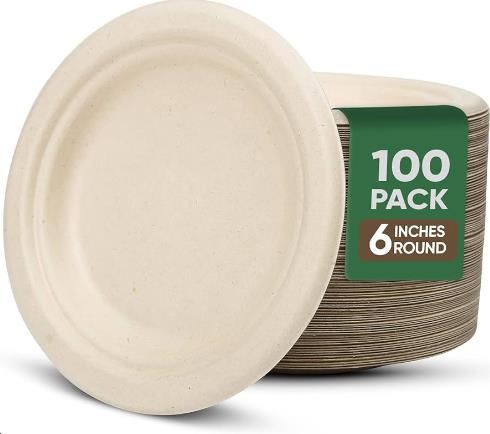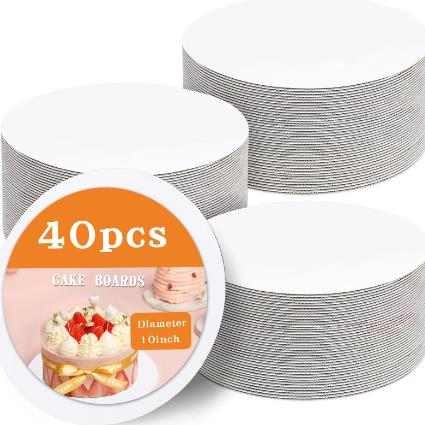
Content Menu
● Understanding Different Types of Plates
● Proper Disposal Methods for Different Plate Types
>> Paper Plates
>> Plastic Plates
>> Biodegradable Plates
>> Ceramic and Glass Plates
● The Recycling Process for Plates
>> Paper Plate Recycling Process
>> Plastic Plate Recycling Process
● Environmental Impact of Plate Disposal
● Alternatives to Disposable Plates
● Best Practices for Plate Disposal
● The Future of Plate Disposal
● Conclusion
● FAQ
>> 1. Can all paper plates be recycled?
>> 2. How do I clean plastic plates for recycling?
>> 3. Are biodegradable plates always better for the environment?
>> 4. How can I reduce my use of disposable plates?
>> 5. What should I do with broken ceramic or glass plates?
● Citations:
In today's environmentally conscious world, proper disposal of everyday items has become increasingly important. Plates, whether made of paper, plastic, or other materials, are no exception. This article will explore the various methods of plate disposal, recycling processes, and eco-friendly alternatives to help you make informed decisions about how to handle your used plates.

Understanding Different Types of Plates
Before delving into disposal methods, it's crucial to understand the various types of plates commonly used:
1. Paper plates
2. Plastic plates
3. Biodegradable plates
4. Ceramic plates
5. Glass plates
Each type of plate requires different disposal methods due to its composition and environmental impact.
Proper Disposal Methods for Different Plate Types
Paper Plates
Paper plates are often considered more environmentally friendly than their plastic counterparts. However, their disposal isn't always straightforward.
Recycling:
Clean, uncontaminated paper plates can be recycled. The recycling rate for paper plates is generally higher than that of plastic plates[6]. However, it's essential to note that not all paper plates are recyclable, especially if they're coated with plastic or wax.
Composting:
Many paper plates are compostable, especially if they're uncoated. Composting is an excellent way to dispose of paper plates while creating nutrient-rich soil for gardening.
Trash:
If paper plates are contaminated with food residue or grease, they should be disposed of in the regular trash.
Plastic Plates
Plastic plates pose a significant environmental challenge due to their long decomposition time and potential to harm wildlife.
Recycling:
Some plastic plates are recyclable, but the process can be complex. The recycling rate for plastics was about 8.5% in the last EPA report, indicating significant room for improvement[3]. To recycle plastic plates:
1. Check for recycling symbols and codes on the plates.
2. Clean the plates thoroughly to remove any food residue.
3. Sort the plates by type of plastic.
4. Place them in the appropriate recycling bin.
Reuse:
When possible, consider washing and reusing sturdy plastic plates to extend their lifespan and reduce waste.
Trash:
If plastic plates are not recyclable in your area or are heavily contaminated, they should be disposed of in the regular trash.
Biodegradable Plates
Biodegradable plates are designed to break down naturally in the environment.
Composting:
Most biodegradable plates can be composted, either in home compost bins or industrial composting facilities.
Recycling:
Some biodegradable plates may be recyclable, depending on their composition. Check with your local recycling facility for guidelines.
Ceramic and Glass Plates
Ceramic and glass plates are durable and reusable, making them excellent choices for reducing waste.
Reuse:
The best way to "dispose" of ceramic and glass plates is to continue using them for as long as possible.
Recycling:
Broken ceramic and glass plates can often be recycled. Check with your local recycling center for specific guidelines.
Repurposing:
Broken plates can be repurposed into mosaic art or other creative projects.

The Recycling Process for Plates
Understanding the recycling process can help you appreciate the importance of proper plate disposal.
Paper Plate Recycling Process
1. Collection: Clean paper plates are collected and transported to recycling facilities.
2. Sorting: Plates are sorted to remove any contaminated or non-recyclable items.
3. Pulping: The plates are turned into pulp by adding water and chemicals.
4. Screening: Unwanted objects are removed from the pulp.
5. Deinking: Inks and binders are removed from the pulp.
6. Bleaching: The pulp is bleached to achieve a white color.
7. Drying: The clean pulp is dried and prepared for use in new paper products[6].
Plastic Plate Recycling Process
1. Collection and Sorting: Plastic plates are collected and sorted by type.
2. Cleaning: Plates are cleaned to remove contaminants.
3. Shredding: The plates are shredded into small pieces.
4. Melting: The shredded plastic is melted down.
5. Pelletizing: The melted plastic is formed into pellets.
6. Manufacturing: The pellets are used to create new plastic products[2].
Environmental Impact of Plate Disposal
The way we dispose of plates has significant environmental implications:
- Landfill Waste: Improperly disposed plates contribute to landfill overflow.
- Ocean Pollution: Plastic plates can end up in oceans, harming marine life.
- Resource Depletion: Throwing away recyclable plates wastes valuable resources.
- Greenhouse Gas Emissions: The production and disposal of single-use plates contribute to climate change.
Alternatives to Disposable Plates
To reduce the environmental impact of plate disposal, consider these alternatives:
1. Reusable Plates: Invest in durable plates that can be washed and reused.
2. Biodegradable Options: Choose plates made from materials like bamboo or palm leaves.
3. Edible Plates: Some innovative companies are creating edible plates from grains or other food materials.
4. Rental Services: For large events, consider renting plates instead of using disposables.
Best Practices for Plate Disposal
To ensure proper plate disposal:
1. Clean plates thoroughly before recycling or composting.
2. Separate different types of plates for proper disposal.
3. Check local recycling guidelines for specific instructions.
4. Consider composting suitable plates at home.
5. Opt for reusable plates whenever possible.
The Future of Plate Disposal
As environmental concerns grow, the future of plate disposal is likely to involve:
- Improved Recycling Technologies: Advancements in recycling processes may make it easier to recycle a wider variety of plates.
- Biodegradable Innovations: More companies are likely to develop truly biodegradable plate options.
- Circular Economy Models: Systems that promote the reuse and recycling of plates may become more prevalent.
- Policy Changes: Stricter regulations on single-use plates and improved recycling infrastructure may be implemented.
Conclusion
Proper plate disposal is a crucial aspect of environmental stewardship. By understanding the different types of plates and their appropriate disposal methods, we can significantly reduce our environmental impact. Whether it's recycling, composting, or opting for reusable alternatives, every action counts towards a more sustainable future. As consumers, we have the power to make informed choices that benefit both our convenience and the planet. Let's strive to dispose of our plates responsibly and encourage others to do the same.

FAQ
1. Can all paper plates be recycled?
Not all paper plates can be recycled. Clean, uncoated paper plates are generally recyclable. However, plates coated with plastic or wax, or those contaminated with food residue, should typically be disposed of in the trash or composted if possible.
2. How do I clean plastic plates for recycling?
To clean plastic plates for recycling, rinse them thoroughly with water to remove any food residue. If necessary, use a mild soap to remove grease. Ensure the plates are completely dry before placing them in the recycling bin. Remember, heavily soiled plates may not be suitable for recycling.
3. Are biodegradable plates always better for the environment?
While biodegradable plates are generally more eco-friendly than traditional plastic plates, their environmental impact depends on proper disposal. They need specific conditions to break down effectively, often requiring industrial composting facilities. If disposed of in landfills, they may not degrade as intended and can still contribute to waste problems.
4. How can I reduce my use of disposable plates?
To reduce your use of disposable plates, consider investing in durable, reusable plates for home use. For events or picnics, bring your own reusable plates or opt for biodegradable options. You can also encourage others to do the same and support businesses that use eco-friendly serving ware.
5. What should I do with broken ceramic or glass plates?
Broken ceramic or glass plates should not be placed in regular recycling bins as they can contaminate other recyclables. Check with your local recycling center for specific disposal instructions. Some facilities accept broken ceramics and glass for recycling. Alternatively, you can repurpose broken pieces for mosaic art projects or dispose of them safely in the trash.
Citations:
[1] https://techbullion.com/a-step-by-step-guide-on-how-to-dispose-of-disposable-plates-the-right-way/
[2] https://smartyhadaparty.com/blogs/home/are-disposable-plastic-plates-really-recyclable
[3] https://www.wastedive.com/news/plastic-recycling-rates-low-better-data-collection-needed-PET-HDPE-TRP/635107/
[4] https://github.com/FudanSELab/academic-writing-guide/blob/main/README.md
[5] https://tomy.amuzainc.com/blog/how-to-sterilize-and-dispose-plastic-agar-plates-and-petri-dishes/
[6] https://www.jcfoodpack.com/news-how-are-paper-plates-recycled-what-to-do-afterwards.html
[7] https://floridadep.gov/sites/default/files/Florida_75_Recycling_Report_17Dec21.pdf
[8] https://web.xidian.edu.cn/ysxu/files/6266402e5ec45.pdf
[9] https://www.chemtalk.com.au/viewtopic.php?t=574
[10] https://www.rts.com/blog/the-complete-paper-card-recycling-process/
[11] https://www.editage.cn/insights/ke-yan-xie-zuo-ying-yu-lun-wen-ti-mu-zhai-yao-yu-guan-jian-ci-jie-xi-2144

















